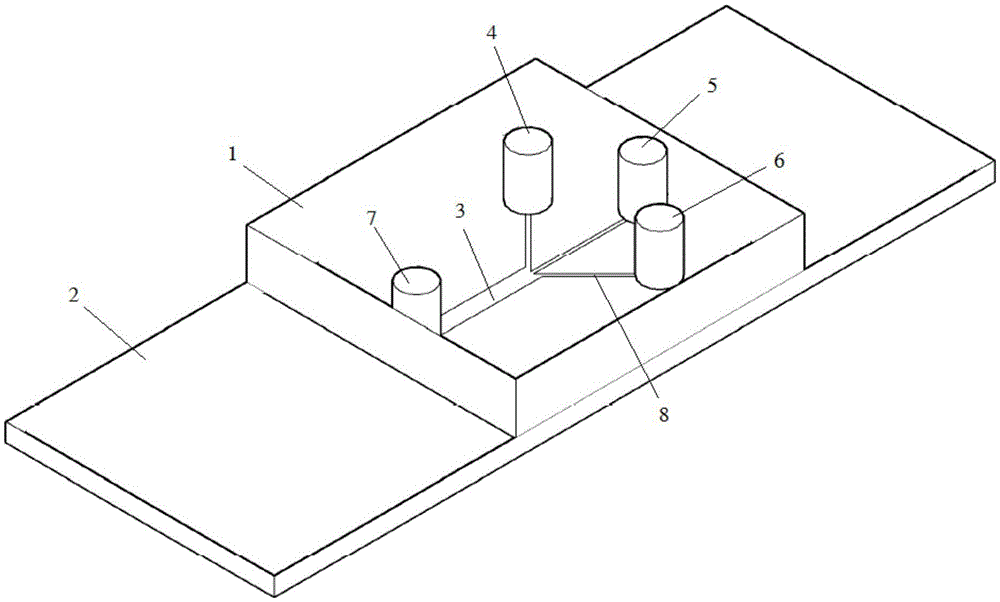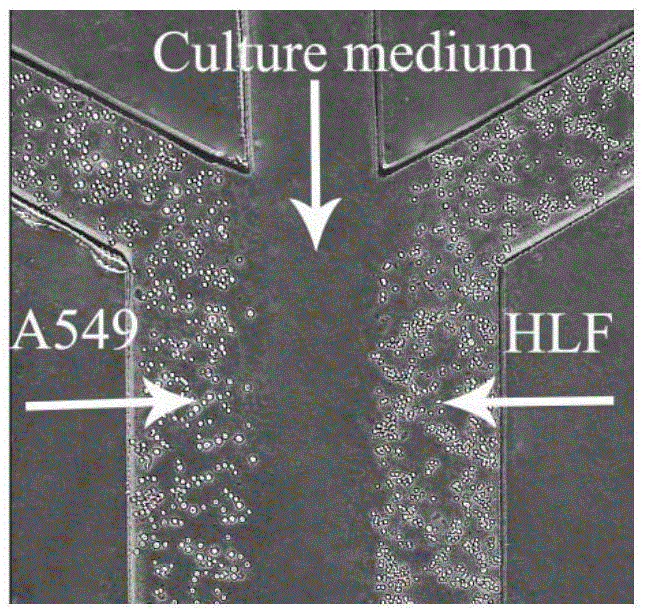Cell non-contact culture method based on micro-fluidic chip
A microfluidic chip and culture method technology, which is applied in the field of non-contact cell culture based on microfluidic chips, can solve the problems of inability to dynamically observe changes in cell behavior, inconvenience in observation and subsequent detection, and difficulty in separating two types of cells. Good application prospects, simple production, and the effect of less sample consumption
- Summary
- Abstract
- Description
- Claims
- Application Information
AI Technical Summary
Problems solved by technology
Method used
Image
Examples
Embodiment Construction
[0026] As a new type of analysis and detection platform, microfluidic chips have the characteristics of miniaturization, integration, high throughput, low energy consumption, and fast analysis, and have been widely used in many fields. Using the microstructure of the microfluidic chip to simulate the living environment of cells and realize rapid and efficient co-cultivation of multiple cells will become an important platform for cell biology research. The invention uses the microfluidic chip as a platform to establish a non-contact co-cultivation platform for heterogeneous cells, which is combined with electronic equipment such as a microscope to distinguish different types of cells without dyeing and other operations and monitor the biological status of cells under interactive conditions in real time. learning behavior changes. Its micron-scale channel can economically and rationally use resources such as cells and reagents, and is very suitable for cell function research.
...
PUM
 Login to View More
Login to View More Abstract
Description
Claims
Application Information
 Login to View More
Login to View More - R&D
- Intellectual Property
- Life Sciences
- Materials
- Tech Scout
- Unparalleled Data Quality
- Higher Quality Content
- 60% Fewer Hallucinations
Browse by: Latest US Patents, China's latest patents, Technical Efficacy Thesaurus, Application Domain, Technology Topic, Popular Technical Reports.
© 2025 PatSnap. All rights reserved.Legal|Privacy policy|Modern Slavery Act Transparency Statement|Sitemap|About US| Contact US: help@patsnap.com



